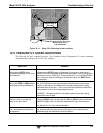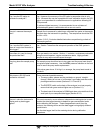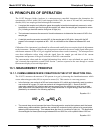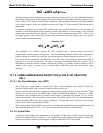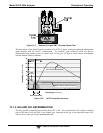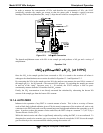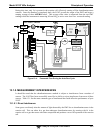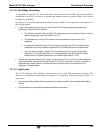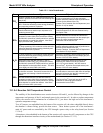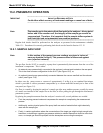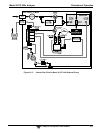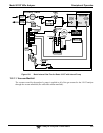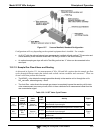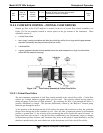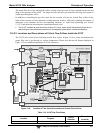
Model 9110T NOx Analyzer Principles of Operation
Teledyne Analytical Instruments 324
13.1.5.2. Third Body Quenching
As described by Equation 13-3, other molecules in the reaction cell can collide with the excited NO
2
*
,
causing the excited NO
2
*
to return to its ground state without releasing a photon of light. This is known
as third party quenching.
Quenching is an unwanted phenomenon and the extent to which it occurs depends on the properties of
the collision partner.
Larger, more polarized molecules such as H
2
O and CO
2
are the most significant quenching
interferents of NO chemiluminescence.
The influence of water vapor on the 9110T measurement can be eliminated with an optional,
internal sample gas dryer (see Section 3.3.2.6).
The interference of varying CO
2
amounts at low concentrations (less that 0.5%) is
negligible.
In cases with excessively high CO
2
concentrations (larger than 0.5%), the effect can be
calibrated out by using calibration gases with a CO
2
content equal to the measured air.
Only very high and highly variable CO
2
concentrations will then cause a measurable
interference. For those applications, it is recommended to use other analyzer models.
Please consult TAI Sales Department or our website (see Section 12.10).
Smaller less polar and electronically “harder” molecules such as N
2
and O
2
can cause interference
of this type as well, however, the concentrations of N
2
and O
2
are virtually constant in ambient air
measurements, hence provide a constant amount of quenching that is accounted for in the
calibration of the instrument .
13.1.5.3. Light Leaks
The 9110T sensitivity curve includes a small portion of the visible light spectrum (see Figure 13-2),
therefore it is important to ensure that the reaction cell is completely sealed with respect to light. To
ensure this:
All pneumatic tubing leading into the reaction cell is opaque in order to prevent light from entering
the cell.
Light penetration is prevented by stainless steel filters and orifices.



